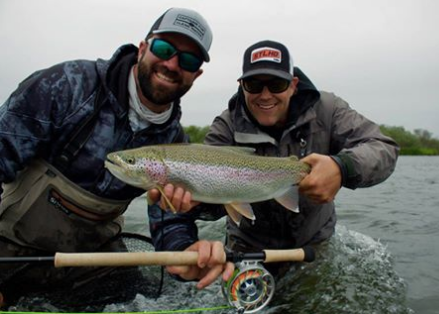Fish Alaska’s 2017 Fishing Report
for the Alagnak River
Check back for updates from around the state all summer! Submit your local fishing reports here, be sure to include all pertinent information.
____________________________________________________________
Angler’s Alibi
June 27, 2017

Our latest guide was given the keys to the jet boat this summer and Landry and I had to be the guests…guide training, someone has to do it!
___________________________________________________
Angler’s Alibi
June 9, 2017

The best trout opener I have seen in years! Nice size average and all trout were plump and healthy.
___________________________________________________
Angler’s Alibi
June 7, 2017

Land of the midnight sun is for real! Great to be back in AK and looking forward to the trout opener. There is nothing like skating a mouse pattern in what seems like virgin waters in Alaska. The surge of the strike, the water breaking, the trout launching on the end of your line. It makes one feel what it must have been like to be the first ever to fish these cherished waters. We have some special places on the Branch River that are just incredible for the opener…The Canyon, Cabbage key, Boca Grande, and some further up river… We cannot wait to fish these waters again. Tomorrow cannot come soon enough…
___________________________________________________
